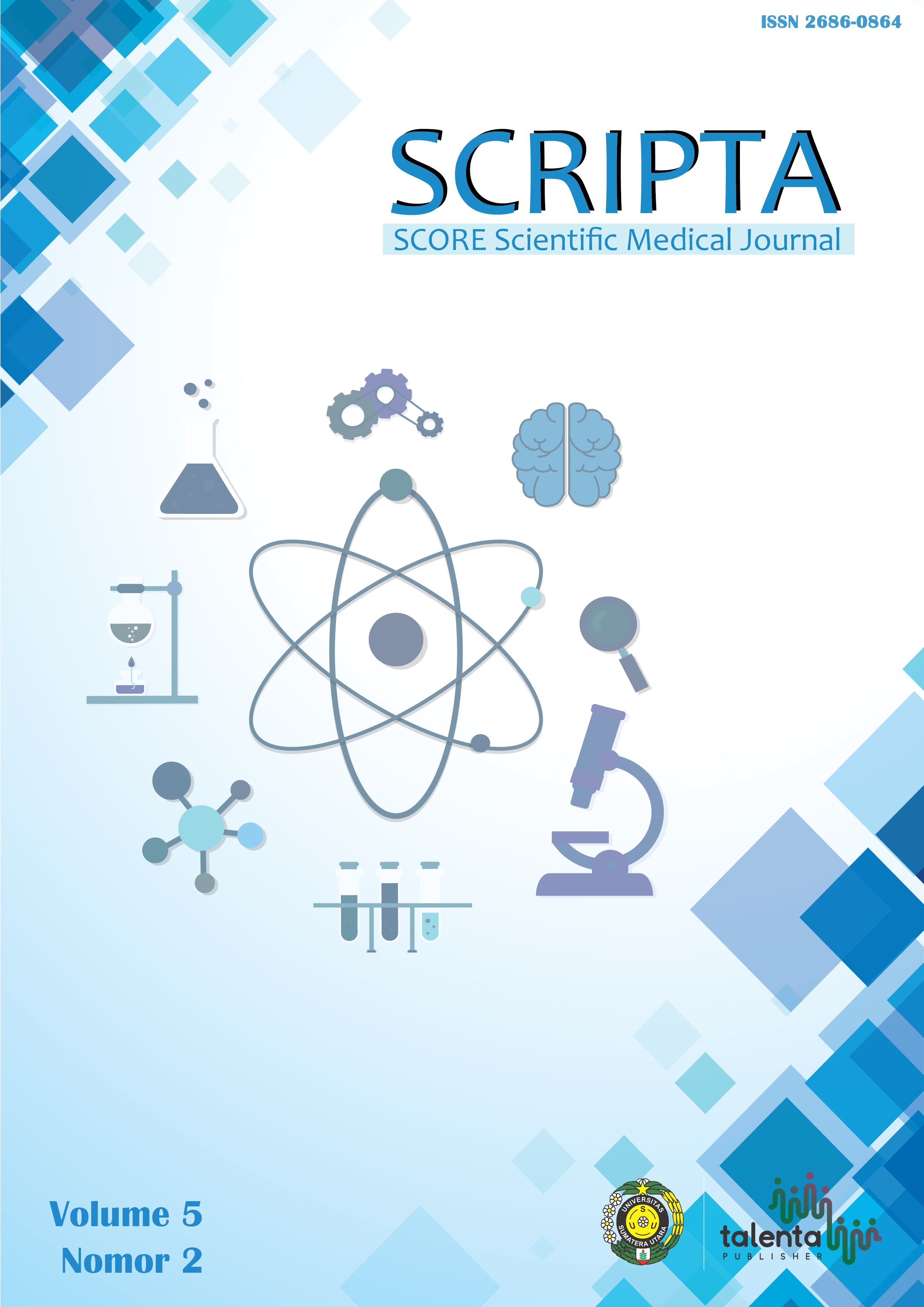Potensi Flavonoid Bahan Alam Sebagai Anti-HIV Guna Mengatasi Darurat Infeksi HIV di Indonesia
DOI:
https://doi.org/10.32734/scripta.v5i2.14678Keywords:
Anti-HIV, Flavonoids, HIV, Natural Ingredients, PotencyAbstract
Background: Human Immunodeficiency Virus (HIV) infection is an unresolved health problem in various countries. Indonesia is rich in various potential natural resources and is able to support the development of HIV therapy through the use of bioactive components from plants, one of which is flavonoid compounds which need to be investigated for their potential anti-HIV activity. Objective: To determine the anti-HIV potential of natural compound flavonoids. Method: The method used is a narrative literature review, with literature collection obtained from PubMed, ScienceDirect and Google Scholar. The selected articles are those published in the last ten years (2013-2022) and full text is available. Result and Discussion: 24 articles included related to flavonoid and HIV. Indonesia is in an emergency situation for HIV infection, antiretroviral drugs (ARV) can only inhibit the development of the virus, but do not kill the virus directly. The antiviral potential of flavonoid compounds makes this substance an opportunity to be studied in HIV infection. The flavonoid subclasses myricetin, herbacitrin, and chalcone have the best anti-HIV activity. The natural ingredient that has the highest flavonoid such as sea fern spores, dragon fruit with a content of 0.14 - 0.15 mg/g, Moringa leaves with a content of 7.79 mg/g, and cinnamon with a fairly high content. Conclusion: Flavonoids have anti-HIV potential with different mechanisms according to the type of flavonoid compounds contained. Flavonoids are mostly contained in sea fern spores, and are also found in dragon fruit, cinnamon and Moringa leaves, which are natural ingredients that are easily available every day.
Â
Latar Belakang: Infeksi Human Immunodeficiency Virus (HIV) merupakan masalah kesehatan yang belum terselesaikan pada berbagai negara di dunia. Indonesia merupakan negara yang kaya akan berbagai sumber daya alam yang potensial dan mampu mendukung pengembangan terapi HIV melalui pemanfaatan komponen bioaktif dari tumbuhan, salah satunya adalah senyawa flavonoid yang perlu ditelitipotensi aktivitas anti-HIVnya. Tujuan: Mengetahui potensi anti-HIV dari senyawa flavonoid bahan alam Metode: Metode yang digunakan adalah tinjauan literatur naratif, dengan pengumpulan literatur dilakukan melalui database PubMed, ScienceDirect, dan Google Scholar. Artikel yang dipilih adalah yang terbit sepuluh tahun terakhir (2013-2022) dan tersedia full text. Pembahasan: 24 artikel didapatkan membahas flavonoid dan kaitannya pada HIV. Indonesia berada dalam kondisi darurat infeksi HIV, obat antiretroviral (ARV) hanya dapat menghambat perkembangan virus, namun tidak membunuh virus secara langsung. Adanya potensi antivirus dari senyawa flavonoid menjadikan zat ini berpeluang untuk diteliti pada penyakit infeksi HIV. Flavonoid subkelas myricetin, herbacitrin, dan kalkon memiliki aktivitas anti-HIV yang paling baik. Bahan alam yang mempunyai kandungan flavonoid tertinggi di antaranya spora paku laut, buah naga dengan kandungan sebesar 0,14 – 0,15 mg/g, daun kelor dengan kandungan sebesar 7,79 mg/g, dan kayu manis dengan kandungan cukup tinggi. Kesimpulan: Flavonoid memiliki potensi anti-HIV dengan mekanisme yang berbedabeda sesuai dengan jenis senyawa flavonoid yang terkandung. Flavonoid paling banyak terkandung dalam spora paku laut, serta juga ditemukan pada buah naga, kayu manis, dan daun kelor yang merupakan bahan alam yang mudah didapatkan sehari-hari.
Downloads
Downloads
Published
How to Cite
Issue
Section
License
Copyright (c) 2024 Helena Azriz, Raihan Syah Ibrahim, Rafi Maulana, Rauza Sukma Rita

This work is licensed under a Creative Commons Attribution-NonCommercial 4.0 International License.
Authors who publish with SCRIPTA SCORE Scientific Medical Journal agree to the following terms:
- Authors retain copyright and grant SCRIPTA SCORE Scientific Medical Journal right of first publication with the work simultaneously licensed under a Creative Commons Attribution-NonCommercial License that allows others to remix, adapt, build upon the work non-commercially with an acknowledgment of the work’s authorship and initial publication in SCRIPTA SCORE Scientific Medical Journal.
- Authors are permitted to copy and redistribute the journal's published version of the work non-commercially (e.g., post it to an institutional repository or publish it in a book), with an acknowledgment of its initial publication in SCRIPTA SCORE Scientific Medical Journal.














